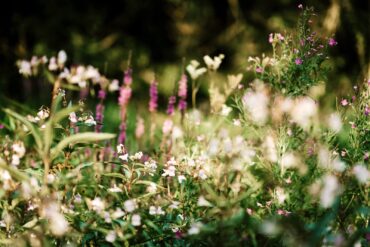 Editor’s note: This post is brought to you by the experts at Angi, who specialize in connecting consumers with vetted pros, verified reviews and fair pricing for home projects and services.
Editor’s note: This post is brought to you by the experts at Angi, who specialize in connecting consumers with vetted pros, verified reviews and fair pricing for home projects and services.
A well-kept lawn is one of the marks of successful homeownership; however, for some, grass lawns just aren’t worth the time and resources. Bright-green grass requires far more water and fertilizer than other plants to maintain, not to mention frequent mowing to keep it all trimmed.
Thankfully, there are a variety of lawn alternatives that don’t need as much time and maintenance to make your yard look aesthetically pleasing. Because these options require fewer resources to keep lush, they are better for both the environment and your wallet.
Below is a list of several of the best low-maintenance lawn alternatives that fare well in West Sound lawns and gardens.
Creeping Jenny
Creeping jenny is a pleasant, light-green ground cover with trailing vines that wrap around stepping stones and spread to cover a stretch of lawn. You can occasionally trim it if necessary, but this whimsical-looking plant doesn’t require the constant mowing that grass needs.
Clover
Once considered a weed, clover is making a major comeback for its soil-enriching properties. If you like the look of clover’s white flowers in bloom, plant a clover bed over your grass lawn. If you prefer a more neat-looking, flowerless expanse of green, consider micro clover varieties instead.
Creeping Thyme
Also known as “Mother of Thyme,” creeping thyme is a vibrant, red-purple ground cover. It spreads to create low, dense mats over a garden. Like creeping jenny, thyme makes for a great substitute for grass around a walkway, where it will curl up around pavers and create a quaint look. Thyme tolerates moderate foot traffic and doesn’t require any mowing.
Moss
Moss is a unique grass substitute that, once established in the garden, adds lovely, soft texture to your yard. Moss requires no mowing yet still achieves the look of a bright green surface. What’s more, it will also spread to grow on surfaces such as trees and rocks. For more considerations when growing moss, see here.
Wildflowers
Replacing a portion of your yard with a flower bed is one of the easiest ways to reduce the size of a grass lawn. Consider planting native wildflowers, such as mariposa lilies, balsamroot and red columbine, to attract pollinators and support the local environment. These flowers are already adapted to the region’s soil, so they don’t require much fertilizing to keep vibrant.
Mulch
Mulch is another lawn alternative option — one that doesn’t require any water or fertilizer to maintain. You can design your landscape around neat mulch beds punctuated by stone paths or other materials, such as pebbles and stones.
Recycled mulch is the most eco-friendly option, serving to enrich the surrounding soil. You’ll only need to mix and replace mulch every few years.
By embracing one or more of these low-maintenance lawn options, you can reduce the size of your grass lawn, cut down on water and energy, and still enjoy an eye-catching and colorful outdoor space.























